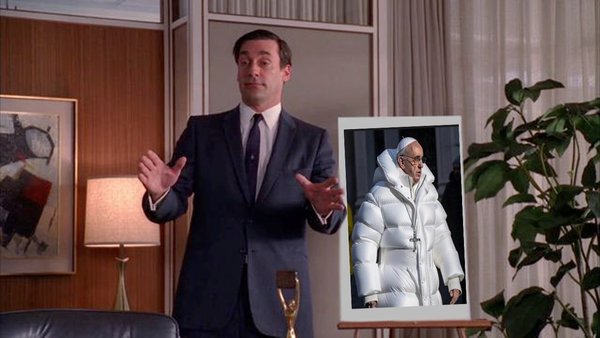‘Generative AI is like a toddler’ /
Tips and best practices for incorporating generative AI into the creative process, from OLIVER Agency's chief creative, Rod Sobral

Image created using Midjourney
Mention AI and the philosophical and ethical debates soon follow. These are important discussions to have, but sometimes they obscure the practical capabilities of the technology — especially when it comes to creative work.
Creatives often don’t like to talk about generative AI’s creative capabilities, and I think this is part because they fear being replaced.
It’s uncomfortable to be confronted with a tool that appears (to the casual observer, at least) to have mastered the essence of your job — especially when it also seems to work much faster than you. But creatives needn’t lose sleep.
Sure, gen AI’s more well-travelled than you, has ‘read’ more books and can draw on more data insights. But the technology works by recognising patterns and by predicting the likeliest next bit of information in a sequence, which often isn’t what’s needed to help a brand to stand out and connect with people on an emotional level.
So, gen AI can’t replicate your humanity or your ability to tell stories that resonate with audiences, but it can augment and amplify those skills.
Many creatives have reservations about the quality of output, which is a valid concern because we need to care about creative standards more than ever — it’s the single biggest contributor to advertising effectiveness, after all.
But gen AI is evolving all the time. ChatGPT failed the New York Bar exam in 2022 but by 2023 it was ranked among the top 10% of takers. And it now has video in its sights. This year, OpenAI has gone on a charm offensive in Hollywood to pimp out Sora, its new text-to-video generator, while China has also just joined the moving image race with VIDU, its first video large AI model that creates 16 seconds HD videos from a prompt.
Gen AI might still be in its infancy, but it’s definitely not a baby anymore — more like a toddler learning to run and jump. And like a toddler, it still needs a human to guide it.
With that in mind, here are my recommended use cases and best practices for ensuring Gen AI and creativity complement each other in a meaningful way.
Reactive advertising /
Gen AI allows for quick image generation, facilitating the rapid execution required to get reactive campaigns over the line. This is an ideal place for creatives to ‘play’ with AI. While not every brand will have something relevant to say in relation to every single reactive opportunity, the ROI on dedicating a small amount of time testing the water can be huge.
Let’s take an example from my own experiences. OLIVER Agency worked side by side with an acid reflux suppressant brand to develop an idea for a Halloween activation for ‘stop your food coming back to haunt you’. Using gen AI, we were able to develop several executions of the idea that showed a ghostly face emerging from different meals in a matter of minutes. Without AI, this execution would have required several days of CG work at great expense. It would never have seen the light of day.
Character design and texturing /
Brand characters are powerful brand assets, but they’re complex and expensive to create. Developing them well takes years of training because you have to understand facial expressions, the proportions of a body and how it moves.
Unless you have access to gen AI, that is. The tool already has these years of knowledge, so you can create something almost instantly and experiment with the results. It’s like in The Matrix when Neo wants to learn Kung Fu, so he calls Tank and a Kung-Fu program is downloaded instantly into his brain.
We recently worked on generating textures for a premium skincare brand. Our client (with 25 years of experience shaping beauty brands) couldn’t tell the difference between the real product shot and the gen AI output.
While a product shoot requires a full team, tons of lighting and a lot of time and money, AI just needs a few minutes. For brands with a creative team that may not have the budget or in-house expertise to create Oscar-worthy cinematography or animations, gen AI is opening up exciting new possibilities.
Scaling digital campaigns /
Gen AI is also brilliant for getting the most value possible out of expensive assets. It can expand what might initially be a single video ad or a collection of product shots into a fully fledged campaign.
I’ve seen the creatives in my team (using Pencil Pro) develop incredible digital posters (including AI-generated people and a festive setting) from simple product shots for a liqueur brand in minutes. I’ve also seen a skincare brand input product shots, textures and content to develop a digital trailer that’s perfect for a paid social media campaign within hours.
Play along with AI to learn from it /
Gen AI is evolving so fast that there are no manuals or books to guide us. And learning a new tool with no reference points requires experimentation — as those who remember the days when BBS (Bulletin Board Systems) was usurped by browsers with visual interfaces will remember well.
It’s time for creatives to go and get lost in the AI playground. Explore and see what you can discover. Because that’s all part of the fun of bringing up a kid — learning new things together.
Want more of the same? /
We don’t just write about best-in-class campaigns, interviews and trends. Our Members also receive access to briefings, online training, webinars, live events and much more.








